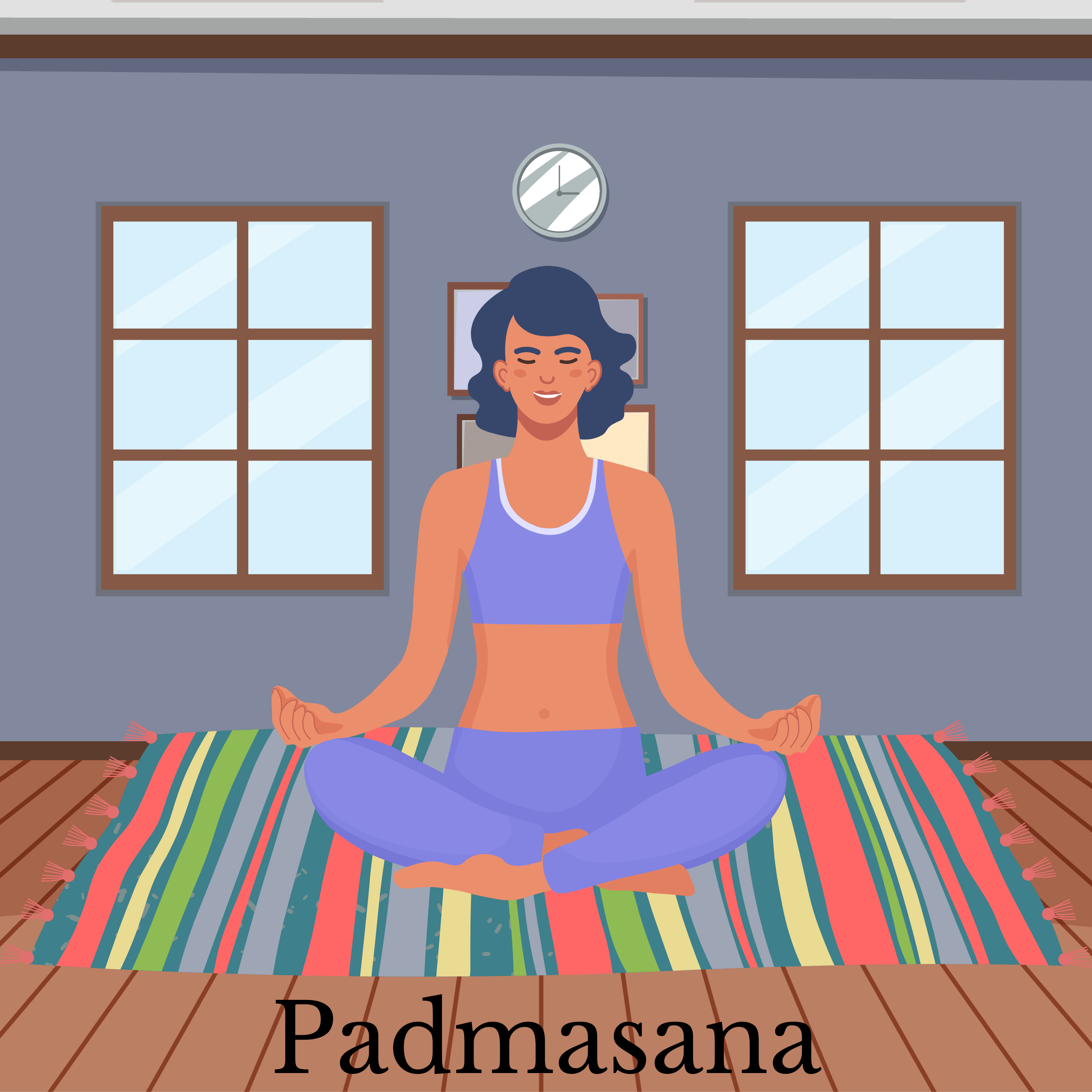Padmasana (Lotus Pose): The Symbol of Serenity and Inner Awakening
Padmasana, or Lotus Pose, is one of the most iconic postures in the entire yoga tradition. Named after the lotus flower, which symbolizes purity, enlightenment, and rebirth, this cross-legged meditative seat is widely used in meditation, pranayama (breathwork), and spiritual practices. With its elegant symmetry and grounding energy, Padmasana invites deep focus, inner stillness, and physical stability. 🌸🧘
Meaning and Origins
- 🕉️ The term Padmasana is derived from two Sanskrit words:
- “Padma” 🪷 meaning lotus
- “Asana” 🧘 meaning pose or posture
Much like a lotus blooms in still water, this pose helps a yogi remain rooted and tranquil, even amid life’s mental and emotional turbulence.
How to Practice Padmasana (Step-by-Step Instructions)
Preparation:
- Choose a calm, clean space with a yoga mat or folded blanket.
- If you’re a beginner, warming up the hips, knees, and ankles with preparatory stretches is highly recommended.
Steps to Enter Padmasana:
- Seated Base
Sit on the floor with legs stretched forward (Dandasana). Keep your spine tall and shoulders relaxed. - Right Foot Placement
Bend your right knee, bringing the right foot up and placing it on top of the left thigh, sole facing upward. The heel should be close to the abdomen. - Left Foot Placement
Now bend the left knee and place the left foot on top of the right thigh, again with the sole upward and heel close to the belly. - Adjust Positioning
Both knees should be touching the floor, and feet should face upward. The spine remains naturally erect, with the head, neck, and shoulders aligned. - Hand Mudras
Place your hands on the knees in Chin Mudra (thumb and index finger touching) or Gyan Mudra, with palms facing upward or downward depending on your energy intention. - Breathing and Focus 🌬️
Gently close your eyes, breathe slowly and deeply. Maintain awareness of your breath or a meditative mantra. - Duration
Hold for a few minutes initially. With regular practice, you can gradually increase the duration up to 15–30 minutes.
Benefits of Padmasana (Lotus Pose)
Practicing Padmasana regularly can lead to profound physical, mental, and energetic transformations:
Physical Benefits
- ✅ Improves Posture
By engaging the spine, core, and back muscles, this pose helps maintain a natural upright posture. - 🦵 Enhances Flexibility
Increases range of motion in the knees, hips, and ankles, making it ideal for anyone working on hip opening. - 🍽️ Supports Digestion
The pose stimulates abdominal organs, aiding digestion and regulating metabolism. - 🫁 Boosts Circulation
The seated position improves blood flow, especially to the pelvis, spine, and lower abdomen.
Mental and Emotional Benefits
- 🧘 Calms the Mind
Padmasana helps stabilize the body, which in turn helps quiet the mind—an ideal posture for meditation and pranayama. - 💆♂️ Reduces Stress and Anxiety
Encourages mental stillness, lowers cortisol levels, and supports relaxation through steady breathing. - 🧘♀️ Improves Focus and Concentration
By minimizing physical movement, it enhances mental clarity and boosts concentration levels. - 🌀 Balances Energy Flow (Chakras)
Activates the Muladhara (Root Chakra) and aligns the spine, helping energy (prana) flow freely upward.
Contraindications and Drawbacks
While Padmasana is deeply beneficial, it may not be accessible for everyone—especially beginners or those with joint limitations.
❌ Avoid or Modify If You Have:
- 🦵 Knee or Ankle Injuries
Those recovering from joint issues should avoid full Lotus and opt for Ardha Padmasana (Half Lotus) or Sukhasana (Easy Pose). - 🚫 Limited Hip Mobility
If the hips are tight or inflexible, forcing the pose may cause strain or injury to the knees. Use props or try preparatory hip openers. - 🩻 Sciatica or Lower Back Pain
The seated posture may exacerbate certain lumbar conditions. Use a cushion to elevate the hips or choose a different meditative pose. - 🧠 Migraine or High Blood Pressure
Sitting still for long durations may not be suitable for individuals with migraines or certain cardiovascular conditions. Always consult a professional.
🧘♂️ Never force your body into a shape it is not ready for. Yoga is about union—not competition or discomfort.
Modifications and Alternatives
If full Padmasana feels too intense, try these safer variations:
- 🪑 Use Props
Sit on a folded blanket, bolster, or block to elevate the hips. This helps reduce pressure on the knees. - 🧘 Try Half Lotus (Ardha Padmasana)
Only one foot is placed on the opposite thigh while the other foot remains under the opposite knee. Easier and more accessible. - 🌺 Practice Sukhasana (Easy Pose)
A comfortable cross-legged pose suitable for all levels. Begin here and work toward Padmasana over time.
Spiritual Significance
Padmasana is not merely a physical posture—it carries deep spiritual symbolism:
- 🪷 Lotus Symbolism: Just as a lotus rises from muddy waters, Padmasana teaches us to grow spiritually despite worldly distractions.
- 🧘♂️ Preferred Seat for Meditation: This posture is considered the most stable and symmetrical pose for advanced meditation and is frequently used in ancient yogic and tantric texts.
- 🔮 Awakens Kundalini: Practitioners believe Padmasana helps awaken Kundalini energy, promoting spiritual awareness and inner transformation.
📝 Final Thoughts: Blossom from Within
Padmasana (https://fitforevers.com/the-transformative-power-of-padmasana/) is much more than a cross-legged seat—it is a symbol of growth, calmness, and inner strength. Whether you’re a spiritual seeker or a wellness enthusiast, this pose can serve as a gateway to greater self-awareness and mental balance.
With regular, mindful practice, your body becomes the lotus, blooming gracefully from the depths of stillness. 🌸🧘♀️
“Your mind is like water. When it’s calm, everything becomes clear.”

